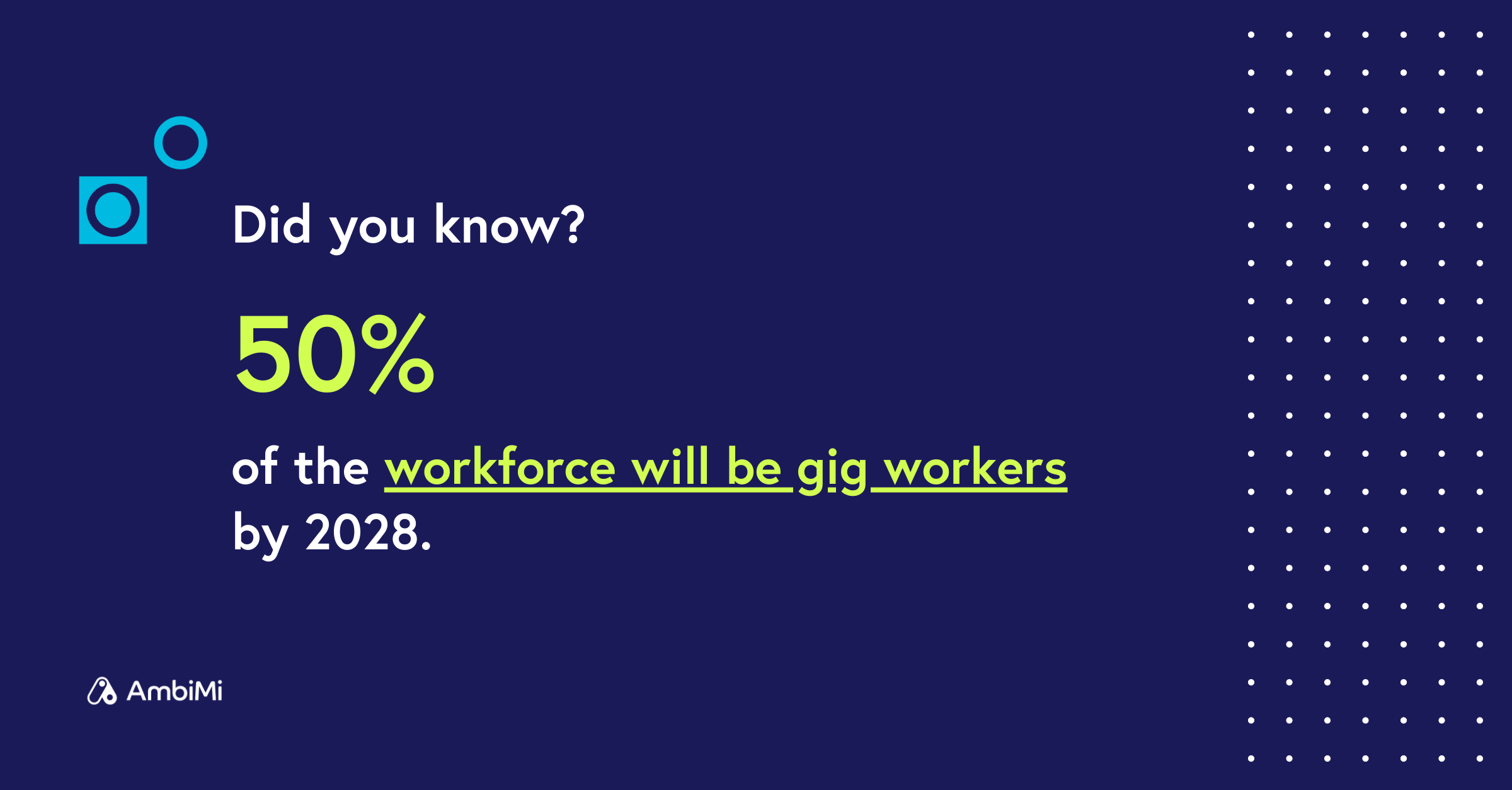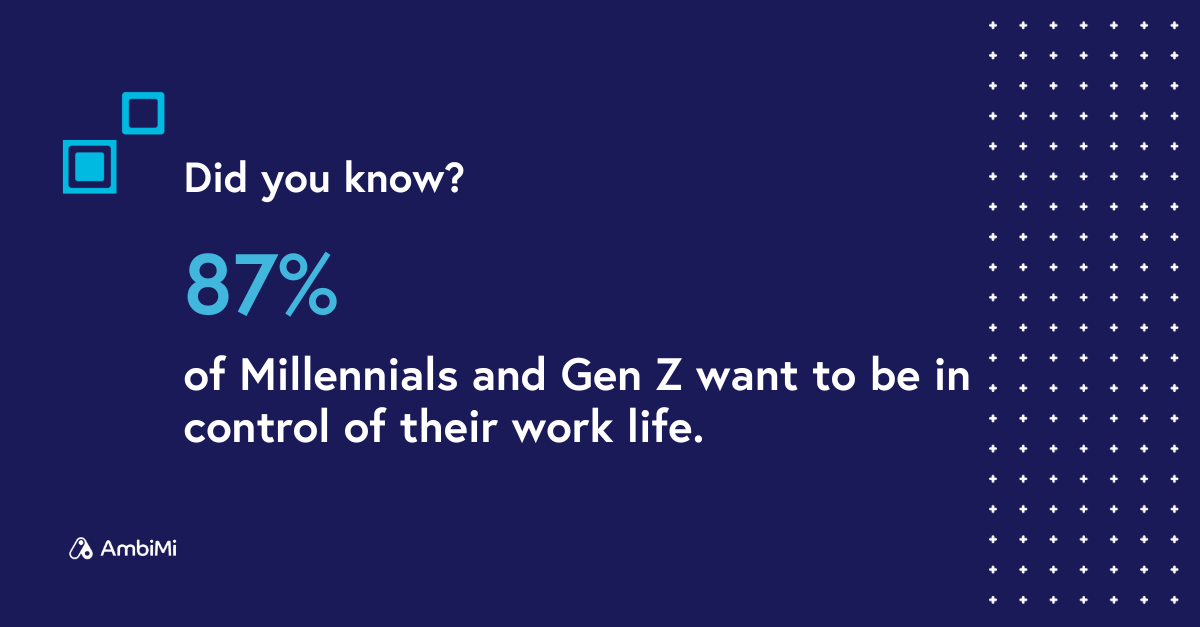Your Ultimate Guide to the Gig Economy
Everything You Need to Know About Hiring Gig Workers
It’s no surprise that advances in technology have catapulted the gig economy. On-demand staffing apps have allowed businesses to hire when and where they want. Many organizations and professionals are drawn to the flexibility that gigging apps provide. It’s become so popular that 37% of Canadian businesses now hire gig workers.
Yet, the gig economy seems like a foreign topic for many businesses, which is why we created this guide. If you’re interested in expanding your talent pool and being able to find staff in under a day, the gig economy may be the right fit for you.
Woah, that's a lot of good reading. Want to take a copy to read later? Enter your email and we'll deliver it right to your inbox!
What is the Gig Economy
“A free market where individuals earn income from on-demand, short-term assignments, tasks, or jobs”
The gig economy is an umbrella term for any short-term, temporary gig. A gig could be a day, a week, a month, or sometimes even a year.
What is a Gig Worker
“An individual who earns income from short-term assignments, tasks, or jobs for clients”
So, a gig worker is anyone completing temporary jobs for individuals or businesses. There are five types of gig workers:
Freelancers
Independent contractors
Temporary workers
Contract workers
Seasonal workers
The Importance of the Gig Economy
The pandemic led to changes in the workforce. Many employees turned to gig work for more flexible lifestyles and preferred it to a 9-5 job.
We’re currently in a candidate-focused market where workers currently have more control. A couple of years ago, candidates competed with others for sought-after jobs; now, it’s the opposite. If you want to protect yourself from “The Great Resignation,” allow employees to work how and when they want.
Plus, hiring for gigs gives you more flexibility too. Instead of hiring a full-time employee, you can schedule employees as you need. Ultimately saving you time and money.
Gig Economy Advantages for Businesses
If you’re still asking yourself: why hire gig economy workers? Here are 8 reasons.
Widen your talent pool beyond traditional job boards
Stay ahead of the hiring curve by allowing people to work how they want
Hire when you want by scheduling temporary staff as you need
Fill roles faster by skipping the long-winded traditional hiring process
Hire based on skills instead of job titles
Give full-time employees more bandwidth
Reduce turnover by improving morale
Save money with fewer costs and a reduced time-to-fill rate
How the Gig Economy Saves You Money
If you’re asking yourself if the gig economy will truly save you money, the short answer is yes. 57% of businesses said they save costs by using gig workers. And here’s how:
Reduced acquisition costs by streamlining your hiring in one platform
Reduced time-to-fill rate, which gives you your time back for other tasks
Not-so-fun fact: the traditional hiring process typically takes 36 days. The good news is that you can find gig workers in a day, saving you 35 days of being short an employee.
Hire as you need, instead of having full-time employees finding busy work on off-times
Reduced payroll costs such as vacation time and benefits
Turnover decreases since you’re hiring on a temporary contract
Temp-to-perm conversions by hosting working interviews on assignment
The gig economy saves on many costs if you use it correctly. Start with one platform, skip the traditional vetting process, and hire as needed to get the most out of the gig economy.
How to Use the Gig Economy in Your Business
The gig economy gives you options for how you can hire. You can hire experienced industry professionals to provide insight into an area your business is missing. Or you can hire entry-level professionals to help save time on tasks. Follow our simple five steps to introduce the gig economy to your company.
Determine what tasks you need help with
Choose the type of gig worker you need
Establish a clear goal for who you need and what you need them to do
Choose a platform that aligns with your goals (like AmbiMi!)
Hire quickly and start immediately
How to Attract Quality Gig Workers
Attracting gig workers is slightly different than targeting your typical permanent employee. They likely have different motivations and goals. The easiest way to find quality employees is to get them to come to you. Here are our top tips to do so.
Start your job search early
Be clear in your job posting
Maintain an online presence
Offer competitive wages and perks
Provide training opportunities to help them upskill
Maintain a good reputation in-person and online
Ask for referrals
Use a platform that supports gigs
How to Engage and Motivate Gig Workers
After attracting gig workers, you need to retain and motivate them. You should cater to gig workers differently than permanent staff to engage them. Their main motivation is flexibility, but they may also fear for job security and structure. Recognizing these will help you connect with them. Remember, giggers aren’t committed to your company and are more likely to leave if for a job with higher pay. To prevent this, you need to give them a reason to stay.
Understand their motivators (differs from person-to-person)
Explain the meaning of your mission or purpose and how the professional contributes
Be transparent about the role and expectations
Build community between gig workers and permanent staff
Stay in touch after the assignment is complete
Take the first step…
Now that you know the basics of the gig economy, it’s time to give it a go. You can try it out for a day or two to see if it’s a good fit for your business.
Get in touch with our team to see how you can start hiring gig workers today!




